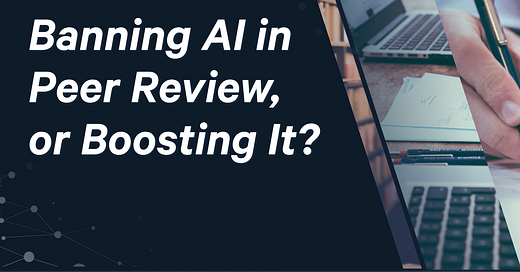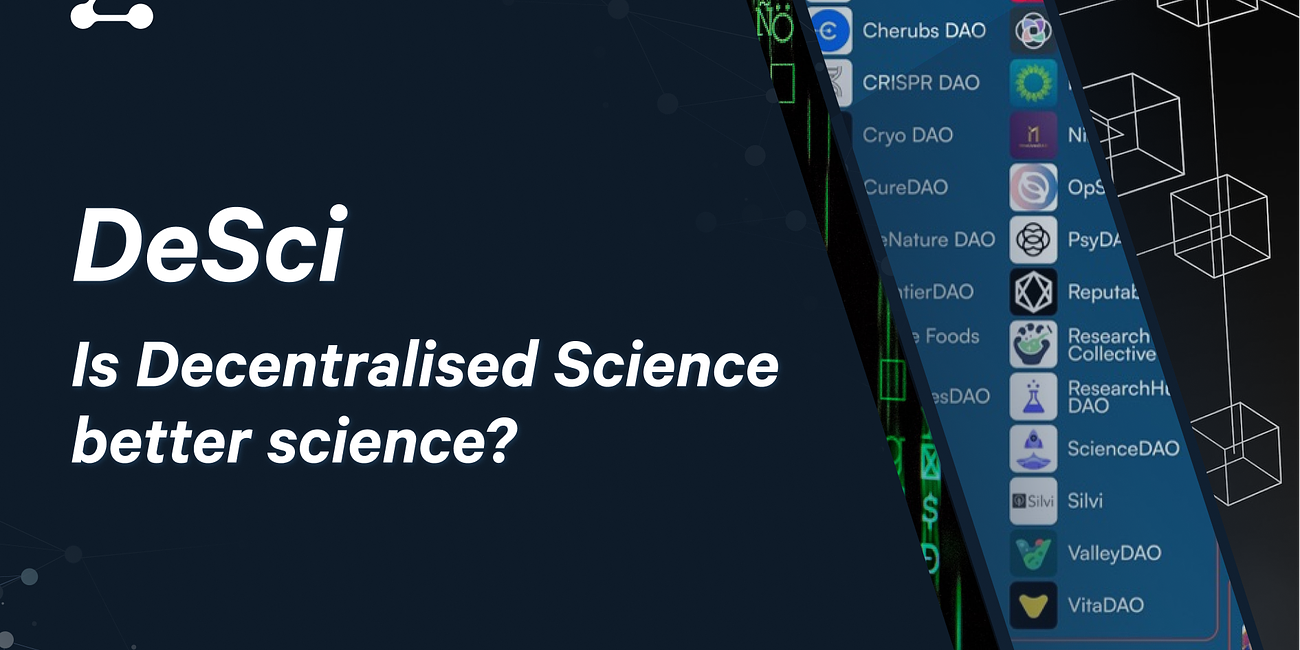Banning AI in Peer Review, or Boosting It?
With the recent Peer Review Week wrapping up, there's much to be sorted out when it comes to how the process is changing, especially regarding AI and the role it may play.
Last week, peer review was debated and discussed at length across various workshops and talks. Peer Review Week featured dozens of online events, many of which discussed the role of AI in peer review. Although ideas differ on what needs to change, they tend to revolve around two key points: how “open” it should be and the role of AI.
We’ll dive into the topic, looking at the different ways peer review is changing and how journals are already reacting — whether that’s by banning AI or changing the entire system.
Don’t miss the upcoming Litmaps Webinar for literature review and more. Sign up below.
Thursday October 12th 2023
9 AM London (UTC+1) 7 PM Sydney (UTC+11) 4 AM New York (UTC-4)
Peer Review is already changing
The criticisms of the peer review process are largely familiar to researchers: it’s time-consuming, there’s a lack of transparency, and researchers aren’t adequately incentivised or given credit. However, we are seeing some of these issues evolve as journals and publishing venues begin to adopt new methodologies.
Already, UNESCO’s Recommendation on Open Science encourages open science practices throughout the research process, including open peer review. In January of this year, eLife became the first journal that made the peer review publicly accessible, and GigaByte recently became the second journal to do so as well. But, open peer review also has its drawbacks. Some argue that it may generate even more bias, particularly in the case where more junior researchers are reviewing the work of more senior researchers. One study found that researchers declined to review more often when it was open rather than anonymous. A natural compromise may be to retain single-blind or double-blind peer review, and simply attribute the reviews and authors after publication.
Changing the way research gets published isn’t without some friction though. Take eLife, the first journal to make peer review open. It also fundamentally changed how it publishes papers this year. The journal publishes all papers, and relinquished “the traditional journal role of gatekeeper”, so it could promote “the evaluation of scientists based on what, rather than where, they publish”. But, there’s been dissent from various angles. One senior editor quit, and some scientists sent a strongly-worded email demanding the editor-in-chief step down. The general sentiment among them is concern that the prestige of the journal may be compromised. However, the editor-in-chief argues that “opposition to eLife’s model is driven fundamentally by powerful scientists not wanting to change a system that has benefited them and which they have sculpted to continue to reward them”.
As dramatic as eLife’s upheaval of traditional publishing was, it still pales in comparison to even more novel ideas when it comes to how to address peer review. Check out our earlier issue of The Scoop for one such example, with how Decentralised Science (DeSci) tries to tackle peer review by better incentivising researchers.
AI in Peer Review, Challenges
It’s impossible to talk about the future of the peer review process without discussing AI and the role it plays. Naturally, it was one of the key discussion points during Peer Review Week.
So far, the general, cultural consensus when it comes to using AI in academia is that it’s acceptable as a supplement (to tweak language, adapt style, etc.), but unacceptable for actual content generation. Thus, many conversations now evolve around generative AI, instead of just “AI”.
For peer review in particular, the community is cautious and the policies reflect the collective skepticism. The NIH banned the use of AI for its peer review a few months ago. The Australian Research Council did the same shortly after. This has also been done for peer reviews pertaining to research grants, with a half dozen UK organisations recently agreeing to not use AI when reviewing applications. However, such bans might be premature. For one, such tools can be used to simply improve written text, which doesn’t involve introducing biases beyond what the user has already written. Even when it comes to actually reviewing text with AI, some believe these tools are especially beneficial in the early stages of review.
The opposition is understandable, particularly since the bans appear to be reactions to certain events where the tools were ill-used. In the case of the Australian Research Council, the ban was enacted after some researchers had clear evidence that their assessment was generated by ChatGPT. Another case earlier this year revealed that journal editors had used ChatGPT to review a paper, recommending fictitious authors in the paper rejection.
A paper from earlier this year addresses several reason why it’s still too early to apply generative AI models to peer review. Typical reasons involve concerns over bias and anonymity, but it’s worth noting these issues are already prevalent in the existing system. Whether AI would exacerbate the problem or (if designed appropriately) remedy it, remains to be seen. There are also social critiques, like how younger researchers relying on such tools won’t learn the valuable skills necessary in thoughtfully reviewing work. It’s the same problem bubbling up in other areas of academia, if not all occupations across the world, where AI can replace some human element of the process.
The peer review process is evolving, as is academia itself, and it’s likely to evolve differently across fields. Although the recent Peer Review Week brought the discussion front and centre, the resulting opinions regarding how to fix biases and the role of AI are disjointed and leave much to be resolved.
The cycle of excitement, followed by bans, followed by opposition, is growing more common across all areas where AI is introduced. The most extreme example being the open letter from the Future of Life Institute, demanding all large-scale AI to cease. But, for those aware of existing AI trends, banning it isn’t a sustainable solution. Instead, entities (like journal publishers) need to consider carefully-constructed policies, not only based on the technology, but with equal attention on ethics. It’s not an easy job, and the fact that it needs to be done quickly makes it only more challenging.
Do you think AI can improve the peer review process, or does it pose more problems than it solves? We’d love to hear your thoughts in the comments below.
Resources
AI in Research and Peer Review: Facing the Future with Integrity, Sept 27
GigaByte journal joins the ‘Publish, Review, Curate’ transformation of the publishing paradigm, Sept 26
Leading research funders agree to not use AI during peer-review process, Sept 26
Peer review week 2023: AI, peer-review, and the future of scientific publishing, Sept 25
The Ideal Future of Peer Review: Through The Editor’s Lens, Sept 25
NIH ban on AI in grant review ‘lacks technological understanding’, Aug 30
Science funding agencies say no to using AI for peer review, July 14
Strife at eLife: inside a journal’s quest to upend science publishing, March






As an independent language researcher who has just had an article TWICE "peer reviewed" by ChatGPT, I have written about how this conversation needs to be broadened out of just the hard sciences. Humanities and social sciences are also highly affected by AI in peer review - this merits a dedicated discussion considering the even greater ideological and political stakes.
Please see my website here:
https://nicospage.eu/update-on-ai-peer-review-incident-journal-response